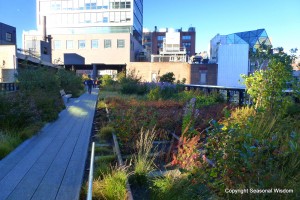
On an historic freight rail line elevated above the streets of Manhattan’s West Side is the High Line — a lush urban garden, filled with trees, flowering shrubs, native plants and grasses. A natural oasis in a cement jungle, the High Line extends nearly 1 1/2 miles over the crowded city streets.
This groundbreaking urban garden proves nature can flourish anywhere if given a chance. Seasonal Wisdom had the chance to walk the High Line and see the garden in its autumnal glory in October, 2012. Come see for yourself how this man-made environment is taking root in New York City.
My walking companion for the High Line tour was the delightful Ann Bingley-Gallops of Open Spaces Feng Shui, who has written about Feng Shui tips for the home in fall, winter and spring for Seasonal Wisdom readers.
We were lucky to have a very pleasant October afternoon, and in many ways it was like the “calm before the storm.” Less than a week later, Hurricane Sandy caused massive devastation to the Eastern seaboard, especially New Jersey and New York. (Fortunately, officials report that most of High Line’s plantings survived Sandy.)
Click on photos to enlarge them.
The High Line extends from Gansevoort Street to West 34th Street in Manhattan’s West Side.
We started our tour at the southernmost point of the High Line, which has a thick grove of trees. It’s hard to believe that we’re in the middle of the most populated city in the United States.
In many ways, the High Line is a “monument to the industrial history of New York’s West Side,” according to Friends of the High Line, the non-profit organization who operates the park. But first a little history…
From 1934 to 1980, the High Line was a freight rail line that carried meat to the meatpacking district, mail to the Post Office and agricultural goods to factories and warehouses. When the High Line was under threat of demolition, two neighborhood residents, Joshua David and Robert Hammond, founded the Friends of the High Line.
Working together with Mayor Bloomberg and the New York City Council, the organizers were able to save the historic structure and create this wonderful urban garden. Today, the park brings peace and natural beauty to the millions who visit.
The High Line design is a collaboration between James Corner Field Operations (Project Lead), Diller Scofidio + Renfro, and planting designer Piet Oudolf.
A sundeck near 15th Street features wooden recliners for visitors to enjoy the outdoors.
The Diller von Furstenberg sundeck has a serene water feature that invites you to slow down and appreciate the space around you.
These fading hydrangeas and ornamental grasses are typical of the lush plantings along the High Line.
Contemporary wooden benches provide stylish spaces for folks to sit and enjoy the garden.
Sculptures are scattered along the High Line. One of my favorites is the colorful and childlike Urban Rattle by Charlie Hewitt at W. 23rd Street.
Behind the prairie plantings are skyscrapers and city views, reminding visitors why this green space is so important in a city with more than 8 million people.
San Tsu Janus by Oliver Laric is part of the High Line’s Lilliput exhibition with installations from six artists scattered around the world. The public artwork can be viewed until April 14, 2013.
Berries grow upon old train tracks, along with native plants, grasses and other plants with multi-season interest.
Near the northern end of the High Line there is a nice view of the Statue of Liberty. Just another example of how this uniquely New York garden is already an important part of this city and its people.
Learn more:
Download a map.
See community kitchen gardens in Chicago, the third largest metropolitan area in United States.
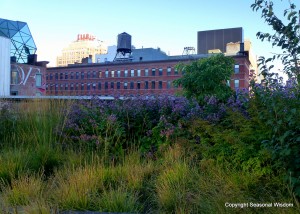
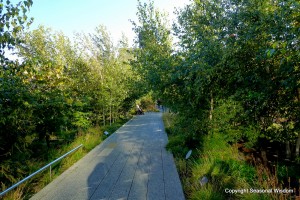
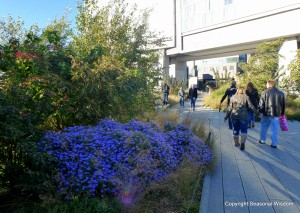
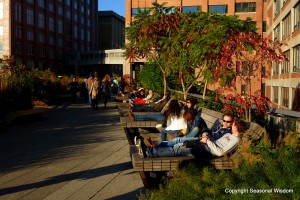
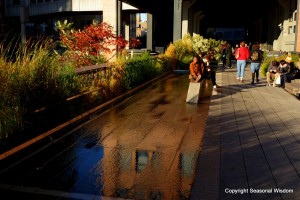
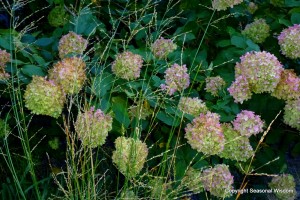
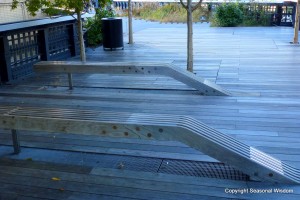
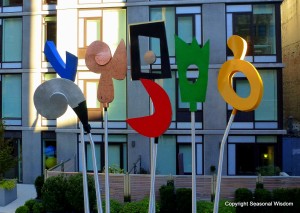
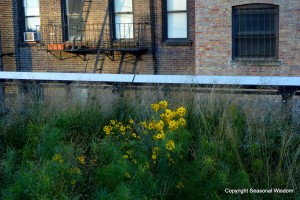
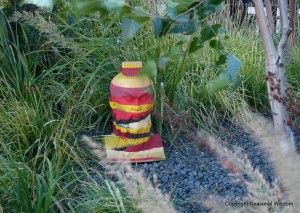
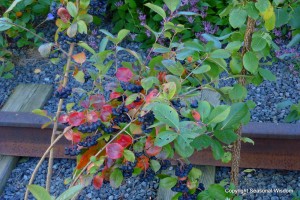
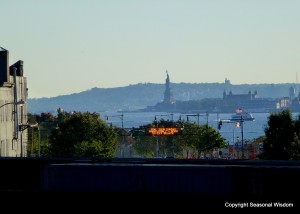
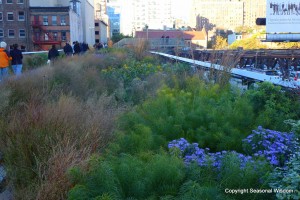











Comments on this entry are closed.
{ 1 trackback }